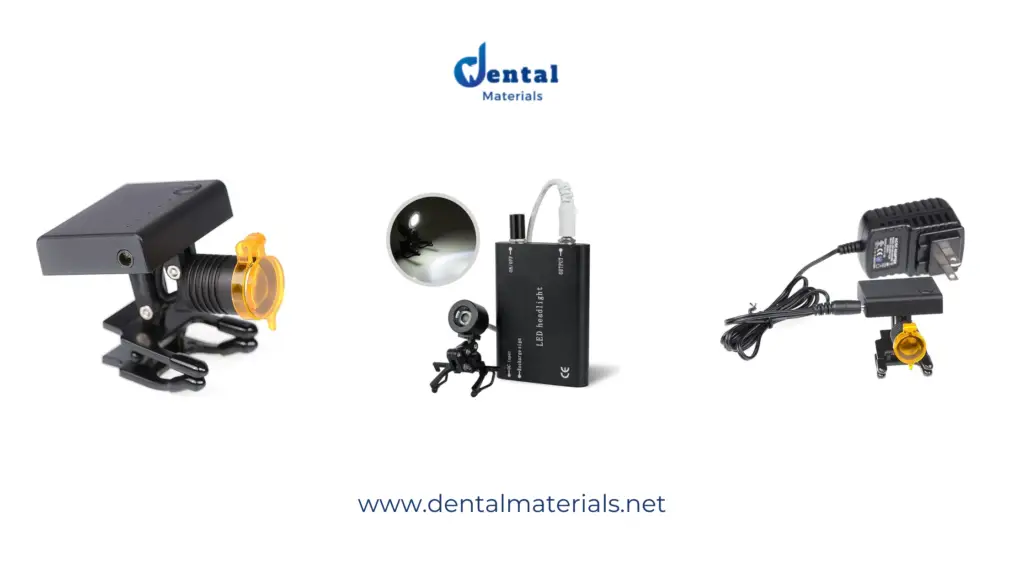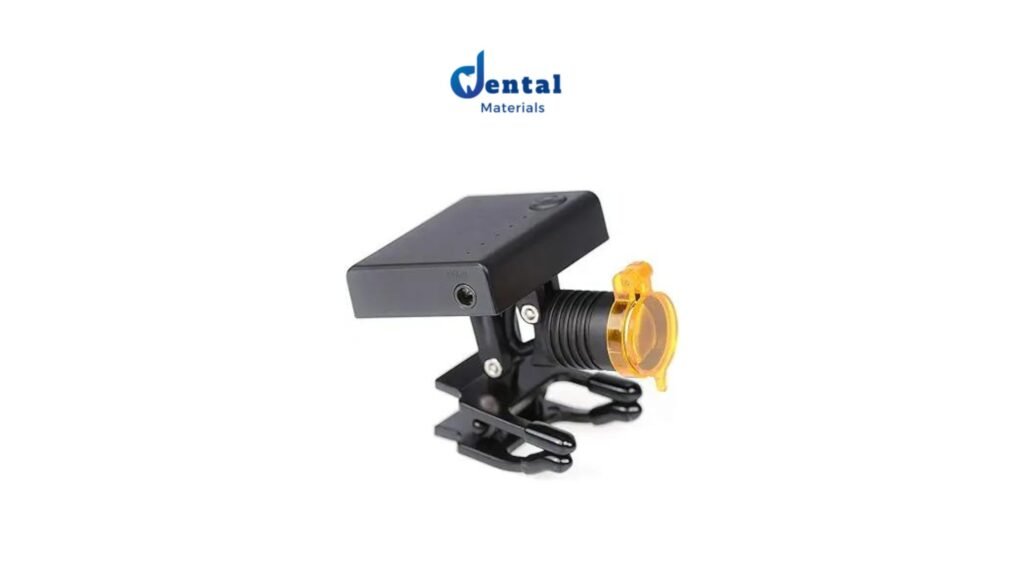When choosing a dental headlight, there are several factors to consider to ensure that it meets your specific needs and preferences.
Tons of different headlights are available in the market, and you can easily get lost between them. So it’s a good idea to focus on certain key features. Here are some:
1- Brightness
A dental headlight should provide sufficient illumination for the task at hand.
a- Bright Enough for the Job: Choose a dental headlight with enough brightness, higher lumens usually mean brighter light. Make sure it’s bright enough for detailed work but not too intense. Based on my experience, a 30,000 Lux.
I recently purchased a 30,000 Lux dental headlight to try it and here’s what this level of brightness looks like:
b- Adjustable Settings: Look for a headlight with adjustable brightness levels. This way, you can customize the light intensity based on the procedure you’re doing.
c- Color Accuracy Matters: A high Color Rendering Index (CRI) ensures accurate color representation. Aim for a CRI of 90 or above to see true colors during dental work.
d- Customizable Spot Size and Focus: Choose a headlight that lets you adjust the size and focus of the light beam. This flexibility is handy for different types of dental tasks.
e- Adaptive Lighting: Some headlights automatically adjust brightness based on your working distance. This feature can be helpful in maintaining optimal illumination without constant manual changes.

2- Light Source
The light source is a critical aspect of a dental headlight, influencing visibility and precision during procedures. LED (Light Emitting Diode) technology is commonly used in modern dental headlights due to its numerous advantages. LEDs offer bright, focused illumination with a cool light output, minimizing heat generation.
This is particularly important in dentistry to ensure patient comfort and prevent discomfort during prolonged procedures. Additionally, LEDs are energy-efficient and have a longer lifespan compared to traditional light sources, reducing the need for frequent bulb replacements.
When choosing a dental headlight, opt for one with a high-quality LED light source to ensure reliable and consistent lighting for various dental tasks.
3- Color Temperature
It’s essential to consider the color temperature of the light source as well. Dental procedures require accurate color representation, and a color temperature in the range of 5500-6500 Kelvin is typically recommended.

This range closely resembles natural daylight, providing a clear and true-to-life view of the oral cavity. The color temperature affects how well you can distinguish between different tissues and materials in the mouth, aiding in accurate diagnoses and precise dental work.
4- Comfort and Ergonomics
Comfort and ergonomics play a crucial role in the effectiveness of a dental headlight. A well-designed headlight ensures that dental professionals can perform procedures with ease and minimal strain during extended periods. Look for a headlight with adjustable features such as straps and padding, allowing for a customized and secure fit on various head sizes.
The weight of the headlight should be considered to prevent discomfort or fatigue during prolonged use.
Additionally, ergonomic designs with swivel capabilities or adjustable angles provide flexibility, allowing practitioners to position the light precisely where it is needed.
5- Battery Life & Type
Consider the battery life of the headlight, especially if you plan on using it for extended periods. A long-lasting battery is essential to avoid interruptions during procedures.
Check the type of battery the headlight uses. Rechargeable batteries are convenient and cost-effective over the long term. Some models may use disposable batteries.
6- Portability and Flexibility
Portability and flexibility are essential considerations when choosing a dental headlight. A portable headlight allows dental professionals to move freely and easily between workstations. Look for lightweight designs that don’t compromise on performance, enabling practitioners to carry the headlight comfortably throughout the day.
Flexibility in terms of adjustable angles or swivel capabilities ensures that the light can be directed precisely where needed during various dental procedures.
This adaptability is particularly valuable for intricate and detailed work. A headlight with a compact and easy-to-carry design is convenient for dental professionals who may need to transport their equipment between different clinical settings.
Read More: Top 3 Dental Headlights Under $100
7- Durability
Ensure that the headlight is durable and can withstand the rigors of a dental environment. Look for materials that are resistant to impact, moisture, and chemicals.
Also, expected light bulb life is an important factor to consider. Choose a headlight that lasts for as much charging cycles/working hours as possible.
8- Compatibility
Ensure that the headlight is compatible with your dental loupes or eyewear if you use them. Some headlight models are designed to integrate seamlessly with specific loupe systems.
Also, some have plastic clips, other have metal ones which are generally more durable.




